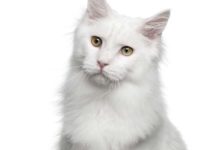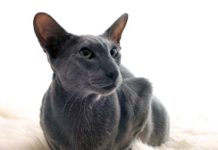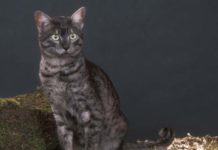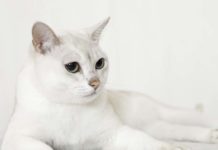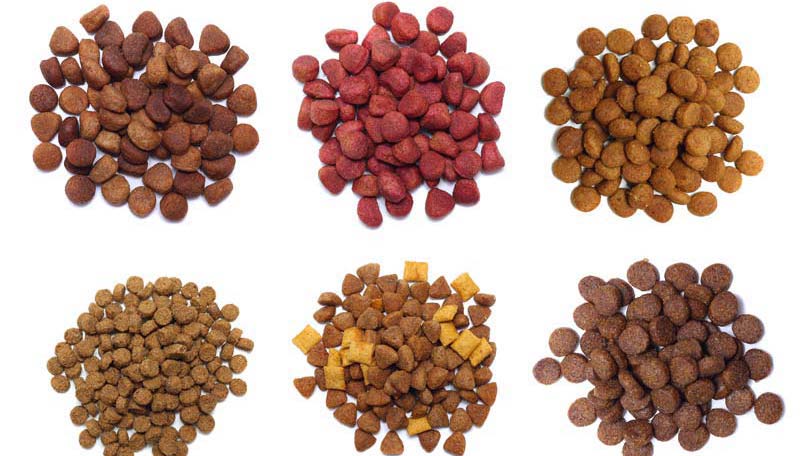
In early 2007 several major brands were found to contain tainted ingredients in their cat foods. These food contaminations lead to the illness and death of thousands of dogs and cats, and caused widespread panic and distrust towards the pet food industry. The culprit was discovered to be wheat gluten imported from China, tainted with the chemical compound melamine, a poisonous fertilizer. Millions of bags and cans of pet food was eventually found to be contaminated, with almost every major maker of pet food affected in some way.
While the widespread panic of the pet food recall has abated, the event brought to the surface many concerns about the content and ingredients in cat food, and now more than ever determining what constitutes a healthy diet for your cat is a confusing and daunting task.
Cats have very specific nutritional needs, and to ignore these needs will adversely affect your cats health. Compared to dogs, cats require a much higher amount of protein in their diet, stemming from the cats inability to regulate the break down of liver enzymes. If a diet is not high enough in protein, the body will begin utilize and attack protein in the cats own muscle.
The amino acids taurine is essential for the formation of bile, as well as eye and heart health, however the feline body is extremely limited in how much taurine it can produce itself. Arginine is another essential amino acid that is essential in the eradication of ammonia from the body. Cats require diets high in both taurine and arginine for proper body functions.
The average cat diet should contain at least 30% protein, compared to 22% in dogs. Taurine is not present in most dog foods, and the amount of arginine needed in cat food is more than double that in dog food. Because of these and many other unique nutritional requirements, it is essential to feed your cat a proper, balanced diet.
It is for this reason that understanding the label on your cat food is so important. Labels can be confusing, but if taken apart, you can decipher much of the hidden meaning in the nutritional value of your cats food.
What’s in a name? When it comes to cat food, quite a bit. If a food is named specifically for it’s main ingredient, such as “Chicken Cat Food”, the named ingredient, chicken, must make up at least 70% of the total weight of the food. If a food name contains the word “dinner” or “formula”, such as “Beef Formula”, the named ingredient must only be at least 25% of the total weight of the food- and filler is frequently used to make up the rest of the content.
By-products are ingredients found commonly in many poorer quality cat foods. Meat by-products are the parts of the animal that is left over after slaughter, unfit for human consumption. In poultry, this can mean the feet, intestines, organs, and diseased animals.
“Crude Protein” is generally made up of the hair, hooves and tendons of animals, as well as beaks and feathers of poultry. The cat may not be able to digest all of this crude protein, leading to a protein deficiency. .
Cereal grains, referred to as “meal” (wheat meal, corn meal) are the leftovers of grain processed for human use, and have very little nutritional value.
“Glutens” such as the wheat gluten found in the tainted pet foods, are a byproduct of human food processing, and used mostly as a binder in the food.
On the ingredient label, there are often more than twenty ingredients listed. Ingredients are required to be listed on the label in order of weight content- so the first few ingredients listed are going to be the major components of the food.
For example, the first ingredients of one food might look like this: “Corn meal, ground wheat, meat meal, chicken fat, wheat gluten”. Another brand might read “Turkey, chicken, chicken meal, barley, brown rice”. In this example, the first food is made primarily of corn and wheat, with a meat source as the third largest ingredient. The second food has true meat as a much greater proportion of its content. Because protein in the form of meat ingredients is the most important component of a cats diet, between these two labels it becomes obvious that the second food is of much higher nutritional value.
Once you have been armed with the knowledge to decipher a cat food label, it’s time to take a look at what you’ve been feeding Kitty. Maybe it’s time to do some more research, and find a different food? If so, keep in mind a few other food choices while you are at the pet store.
Foods that claim to be “organic” can fall into two categories. A food advertised as “made with organic ingredients” is required to contain only 70% of actual organic ingredients. True “organic” labeled cat food contains at least 95% organic ingredients.
Although vegetarian dog foods have been steadily gaining popularity, vegetarian options are not a healthy choice for cats. Because cats are true carnivores, they rely on meat protein for their survival.
Another unique consideration for cats is the water content of a food. In nature, a cats diet would be made up of as much as 70% water, requiring little supplemental water intake. The average dry cat food can contain as little as 6% water, and studies have shown that cats do not drink enough additional water to make up for the lack of moisture in their food. As a result, feeding dry food exclusively may have a detrimental effect on cats health, and it has been linked to a higher incidence of chronic dehydration, urinary tract disease and renal failure.
By contrast, commercially prepared canned food typically contains 40-45% water- still not the same amount as the cat would get in the wild, but a great improvement over dry food.
Providing a healthy diet for your cat is dependent on your understanding of the unique nutritional requirements of the feline body. By carefully researching the ingredients in your cat food, and through consultation with your veterinarian, you can find a food that can give you peace of mind, and provide your cat with the nutrition to support a long and happy life.

